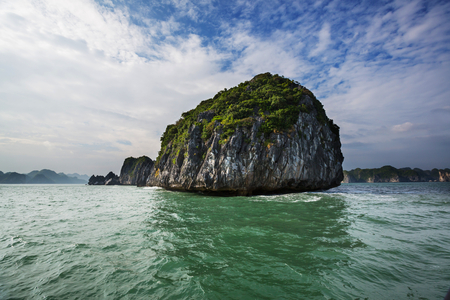Indonesia Updates List Of Export-Banned Commodities.
As part of its efforts to strengthen domestic industries and promote economic resilience, the Indonesian government is taking an active role in regulating export activities. One of the key instruments in this strategy is the issuance of a new regulation governing the list of export-banned commodities. This regulatory measure is ultimately aimed at enhancing the country’s long-term industrial competitiveness.
The Indonesian government, through the Ministry of Finance (“MOF”), has issued a new regulation to implement the latest export ban policy introduced under Ministry of Trade (“MOT”) Regulation No. 9 of 2025 concerning the Third Amendment to MOT Regulation No. 23 of 2023 on Export Policy and Regulation, dated March 6, 2025 (“MOT Reg. 9/2025”).
The updated list of export-banned commodities is set out in MOF Decree No. 6/KM.4/2025, dated March 14, 2025 (“New Decree”). This replaces the previous list under MOF Decree No. 47/KM.4/2024, dated October 11, 2024 (“Old Decree”).
For companies involved in the export of regulated goods, understanding how the New Decree differs from the Old Decree is essential to maintaining compliance and avoiding potential disruption. This article looks at the key differences and what they could mean for your business.
Scope of Export Restrictions
The New Decree reaffirms the MOF’s authority to supervise national export activities, serving as the legal basis for enforcement within key regulated zones. Specifically, MOF oversight extends to (i) the Free Trade Zone and Free Ports (“FTZFP”), (ii) Bonded Storage Providers (“BSP”), and (iii) the Exclusive Economic Zone (“EEZ”) for exports destined outside Indonesia’s customs territory. This scope remains unchanged from the previous decree.
Both the Old and New Decrees identify 19 types of commodities subject to export restrictions. These are:
| Swallow’s nestRiceAnimals and animal productsNatural plants and wildlifeFish (CITES and non-CITES)Wood | Rough diamondsTinScrapSample products of the mining industryPrecursors and pharmaceuticalsFertilizersOther fuels | Oil and gasMining productsCoalCoal productsSea sand from marine sedimentationKratom |
Of the 19 listed commodities, three categories have been revised under the New Decree:
- Natural plants and wildlife
- Fish (CITES and non-CITES)
- Mining products
The remaining 16 categories remain unchanged from the Previous Decree. These revisions may signal a shift in regulatory priorities, particularly in sectors tied to biodiversity protection and extractive industries.
Updates Under the New Decree: What’s Changed and Why It Matters
- Natural Plants and Wildlife
The New Decree introduces formal refinements to improve clarity and enforcement of certain export restrictions. It also specifies the form of each commodity (e.g., frozen, refrigerated, or fresh) and its category or use (e.g., scented powder for religious rituals) before listing specific items.
These changes are designed to facilitate more accurate classification and consistent enforcement during export inspections, enabling authorities to assess commodities based on their form and intended use.
- Fish (CITES and non-CITES)
The New Decree expands the list of export-prohibited marine species. A significant addition is Anguilla anguilla (European eel) and several related species – Anguillla bicolor, Anguilla marmorata, Anguilla interiosis, and Anguilla celebesensis.
In addition to earlier restrictions on ray species, the New Decree also now prohibits the export of Borneo Shovelnose Ray, Jimbaran Shovelnose Ray, and Indonesian Shovelnose Ray. These updates align Indonesia’s export controls with global conservation efforts and underscore its commitment to protecting marine biodiversity.
- Mining Products
Major changes have been introduced in this category. The New Decree:
- Adds titanium slag to the list of export-prohibited commodities.
- Imposes a blanket ban on the export of iron ore and concentrates, removing the previous threshold based on mineral content – meaning all forms are now restricted regardless of grade.
- Lifts prior export bans on laterite, copper, lead, and zinc concentrates, opening up new export opportunities for these minerals.
These changes are expected to redirect key mineral resources toward domestic processing industries, supporting the government’s downstreaming agenda, while simultaneously liberalizing exports for select minerals to support industry-specific growth.
Strategic Direction: Clarity, Control, and Competitiveness
The New Decree reinforces Indonesia’s commitment to long-term industrial resilience and economic self-reliance by refining the scope and detail of export restrictions. While most restrictions remain unchanged, the targeted revisions:
- Improve regulatory clarity for exporters;
- Reflect international environmental commitments; and
- Support domestic value-added production through selective export prohibitions and relaxations.
For businesses involved in regulated commodities, staying up to date with these shifts is critical. Strategic planning, compliance alignment, and timely licensing reviews will be essential to navigate this evolving export landscape. (14 May 2025)






